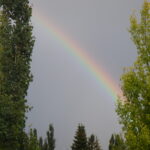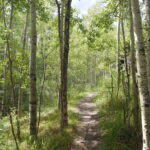Definition of Grief
It is first important to understand the definition of grief and realize that it is not only connected to the death of a loved one. Grief is defined as the emotion we feel or experience when someone (friend, family, co-worker, pet) or something (job, marriage, worker) we are attached to is no longer as it was (death, care-giving, loss of income). Loss produces a sense of helplessness in us. It is a feeling that says, “My world has been changed.” Grief is a normal reaction to loss, but as a society we have not been educated on how to deal with grief or a grieving loved one.
Stages of Grief
Grief is an emotion that NO two people experience the same, however there are similarities in the ways that we process grief. Over the past few decades, these stages have been grouped into roughly the same 5 categories. Elizabeth Kubler Ross was considered the pioneer in this field. Recently Dr. Therese Rando, a noted grief expert has coined a new stage – Anticipatory Grief. This stage refers to the process in which we begin to mourn, past, present and future losses. This is commonly seen in people who are care-giving for a loved one. The following 6 stages are NOT experienced in a linear fashion:
Anticipating Grief/Loss
Denial
Anger
Bargaining
Depression
Acceptance
Nature and Grief
Now that we have defined grief and these 6 stages, how does nature fit in to all of this?
“The moon is a reminder that no matter what phase I’m in, I’m still whole.– Author Unknown” When we connect with nature, we realize that life will go on. There are seasons in nature, just like there are seasons in our life. The different seasons, the rejuvenation of a forest after a fire, the waxing and waning of the moon and the rise and fall of the ocean tide, all are showing us how to relax and surrender into the cycles of life.
National Geographic studied how elephants grieve. The elephants first gather around any bones of their species that they come across in a defensive circle. Then they turn the bones over, picking them up, feeling every crevice. After this, they touch the bones with their hind feet. They honour the deceased and hold vigil together. This clip captures this ritual: https://www.youtube.com/watch?v=TjtrdpSwEUY
Mourning after the “death” of someone or something is an essential part of living. As a culture, we have, in many ways, lost an understanding of and support for a more active mourning. Grief helps us to become aware of ourselves and our feelings. Dr. Alan Wolfert, Director of the Center for Loss and Grief in Fort Collins, Colorado, believes that Grief Gardens are one way to bring peace of mind, serenity and tranquility all in one. They help to honour those who have passed, but also create a community of connection amongst those who tend to and spend time in the gardens.
Since anger can be a part of the mourning process, it needs to be acknowledged and addressed in healthy ways. I have heard of various psychologists who take their clients outdoors with cartons of eggs that they aim at targets to “chuck away” their frustrations. The breaking of the eggs seems to allow the release of their pent-up anger.
Dr. Nooshin Razani, Pediatrician at UCSF Benioff Children’s Hospital Oakland, states that having a split-second experience of awe moves us from being internally to externally focused, allowing anxiety and depression to go, and feelings of empathy to grow. There is so much awe and wonder in nature for us to see if we just slow down and use all our senses.
Breathing deeply can lower high blood pressure and help with an overall sense of feeling calm. When walking in nature, you are breathing in naturally occurring phytoncides which help to boost your immune system. Sometimes walks can create new bonds with the natural landscapes. There also may be solace found in places where you and your loved one previously enjoyed time together. The sun and fresh air are amazing and free tools that exist right out your very own front door that help bring a sense of hope, especially when you are working through heavy emotions. Grief walks in parks are gaining in popularity because of this natural healing capacity.
The simple act of walking helps to balance the right and left hemispheres of the brain. Walking with nature as a back drop boosts this balancing even more. This is since there are no right angles in nature. Instead, everything in nature flows. This helps align with the right side of our brain where intuition, creativity and emotions reside.
Nature can also present many signs to us for interpretation through the different animals, birds and insects that cross our path. There are many websites dedicated to the symbolism of each of these creatures which may help to bring comfort and connection.
Study after study has shown how exposure to nature has improved emotional and mental well-being. Dr. Shimi Kang, an award-winning Harvard trained physician in Vancouver BC, prescribes her patients struggling with anxiety and depression, 30 minutes outdoors every day instead of pharmaceuticals. That is one powerful prescription!
There is no one “right” way to grieve. Grief is as unique as everyone. You need to find what rituals work for you. Rituals in nature are medicine for your soul and a natural prescription for grief. May nature, friends, family and community support you through your grief.

